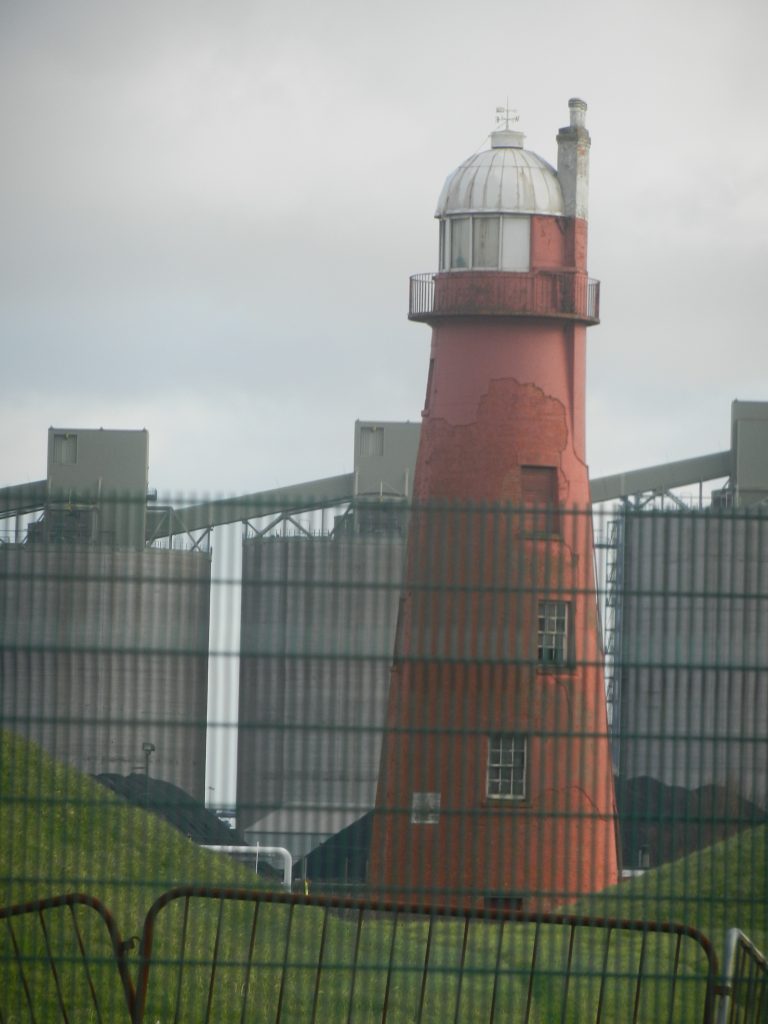
Whereas the brickwork of the was rendered and then painted red the low light (s.p.b.) was coloured white by the unpainted render. There is no evidence that the high light was lived in although the spiral staircase was lit on each flour by a twelve-pane vertical sash window and the chimney stack retains evidence of at least two internal fireplaces; presumably the first lighthouse-man lived in the low light and walked to and from the high light. Building the lighthouses in the early 19th century demanded many bricks and a skilled bricklayer, a skill probably learned in the building of tower mill windmills. Technical detail as to how powerful lights were generated in the 1830s can be found in other publications such as Storey, Arthur ‘Hull Trinity House History of Pilotage and Navigational Aids of the River Humber, 1512-1908’. Storey also tells us that following damage from a lightening strike the high light was re-built in 1876 on more secure foundations and with superior quality bricks and also an attached lighthouse keeper’s cottage; which must have been demolished at some point. The third lighthouse of the trio was built just a few years after the first two – see later.